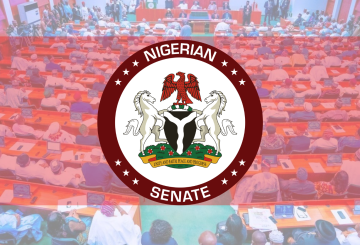The Central Bank of Nigeria’s proposal to redesign the naira prompted the depreciation of the country’s currency, according to the Nigerian Economic Summit Group, which also claimed that inflation reduced the value of the currency by 14.9%.
This was revealed at the NESG’s 2023 Macroeconomic Outlook Report titled, “Nigeria in Transition: Recipes for Shared Prosperity.”
The country’s issue with inflation was discussed in the paper, which also identified its main causes.
A portion of the report reads, “A further breakdown of the inflation numbers showed that the Food and Core inflation averaged 20.6 per cent and 15.8 per cent, respectively, in 2022. Since the country relied heavily on imports for manufactured and industrial intermediate goods, global inflationary pressure permeated all productive activities in Nigeria.
“Domestically, a combination of cost-push and demand-pull factors constituted significant drivers of the surge in the general price level. Some of these factors include shortage of industrial inputs, insecurity, lower agricultural productivity, the high price of fuel, logistics problems, increased VAT, increasing energy cost (electricity), and foreign exchange scarcity.
“Since the demand for necessities is relatively inelastic – the change in demand is relatively unresponsive to the change in price – many businesses transferred additional production costs to consumers, resulting in higher overall prices for goods and services, particularly food.”
The report also stated that at the end of the year, the purchasing power of N1000 in January 2022 had decreased to N851.
“On the welfare side, rising inflationary pressures reduced households’ purchasing power and access to necessities. To illustrate, the purchasing power of N1000 in January 2022 had fallen to N851 by the end of the year. This situation exacerbates various forms of poverty – monetary and non-monetary deprivation – and contributes to Nigeria’s multi-dimensional poverty, which is currently estimated to affect over 6 out of every 10 Nigerians.”
The Investors and Exporters and parallel market rates showed a 2.4% and a 30.01% depreciation in the naira, respectively, according to the NESG.
It said, “In 2022, Naira depreciated by 2.4 per cent and 30.1 per cent in the Investors’ & Exporters (I&E) and the parallel market rates to N451/US$ and N745/US$, respectively. Consequently, the premium (the gap) between the official and the parallel markets expanded from N55 (18 per cent of the official rate) at the beginning of the year to N294 (65 per cent) at the end of 2022.”
The CBN’s decision to redesign the national currency, according to the NESG, caused the naira to lose value, particularly in the black market.
The report read, “Also, in December 2022, the Monetary Authority initiated the redesign of the N200, N500, and N1,000 notes to manage Naira liquidity. This action triggered further depreciation of the Naira against the US dollar in the foreign exchange rate market, especially the parallel market rate. Aside from the CBN currency redesign, other issues that triggered Naira depreciation include US monetary policy tightening that strengthened the US dollar and the proliferation of political activities with the US dollar.”
Additionally, it was revealed that the unemployment rate will rise by 37% in 2023, and that the percentage of people living in poverty will likely reach 45%.





